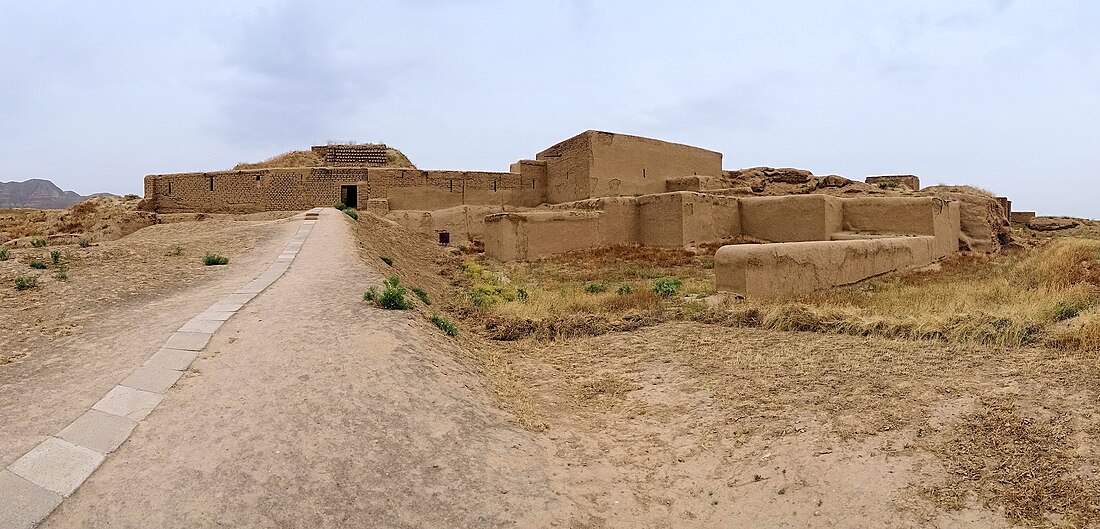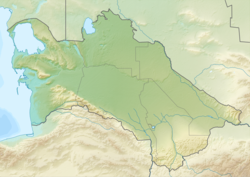Nisa, Turkmenistan
Ancient capital of the Parthian Empire From Wikipedia, the free encyclopedia
Nisa (Ancient Greek: Νῖσος, Νίσα, Νίσαιον;[1][2] Turkmen: Nusaý; also Parthaunisa) was an ancient settlement of the Parthians, located near the Bagyr neighborhood of Ashgabat, Turkmenistan, 18 km west of the city center. Nisa is described by some as the first seat of the Arsacid Empire. It is traditionally assumed to have been founded by Arsaces I (reigned c. 250 BC–211 BC) and was reputedly the royal residence of the Parthian kings, although it has not been established that the fortress at Nisa was either a royal residence or a mausoleum.
 Entrance to Nisa | |
| Alternative name | Parthaunisa Mithradatkirt Nusaý |
|---|---|
| Location | Ashgabat, Turkmenistan |
| Coordinates | 37°58′0″N 58°11′42″E |
| Type | Settlement |
| History | |
| Abandoned | 100 B.C. |
| Periods | Parthian Empire |
| Cultures | Parthian |
| Associated with | Arsaces I, Mithridates I |
| Site notes | |
| Condition | Ruined |
| Official name | Parthian Fortresses of Nisa |
| Criteria | Cultural: (ii), (iii) |
| Reference | 1242 |
| Inscription | 2007 (31st Session) |
| Area | 77.9 ha (0.301 sq mi) |
| Buffer zone | 400.3 ha (1.546 sq mi) |
In 2007, the fortress was declared a World Heritage Site by UNESCO.[3]
History
Nisa was a major trading hub in the Parthian Empire.[4] It was later renamed Mithradātkert (Parthian: 𐭌𐭕𐭓𐭃𐭕𐭊𐭓𐭕, lit. 'fortress of Mithradates') by Mithridates I of Parthia (reigned c. 171 BC–138 BC). The region was famous for the beauty, agility and strength of its horses.[5]
Nisa was totally destroyed by an earthquake during the 1st decade BC.
Excavations
Excavations at Nisa have revealed substantial buildings, mausoleums and shrines, many inscribed documents, and a looted treasury. Many Hellenistic art works have been uncovered, as well as a large number of ivory rhytons, and rims (coins) decorated with Iranian subjects or classical mythological scenes.

Gallery
- Views of Nisa wall
- View of Nisa gate
- Oblique view of Nisa ruins
- View of Nisa ruins
See also

References
Bibliography
External links
Wikiwand - on
Seamless Wikipedia browsing. On steroids.







